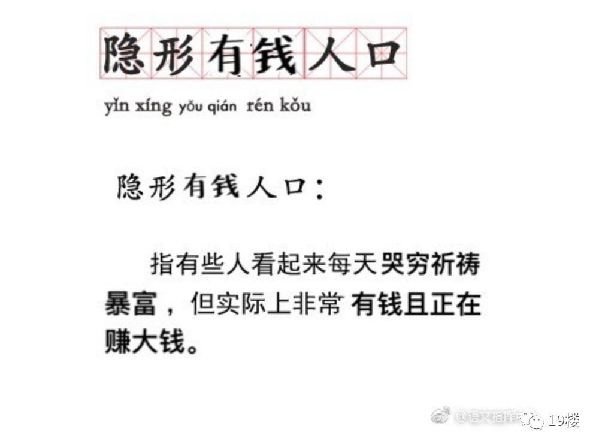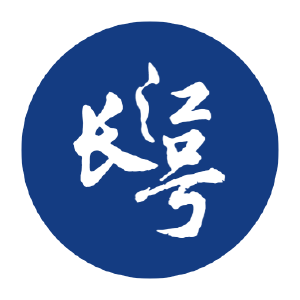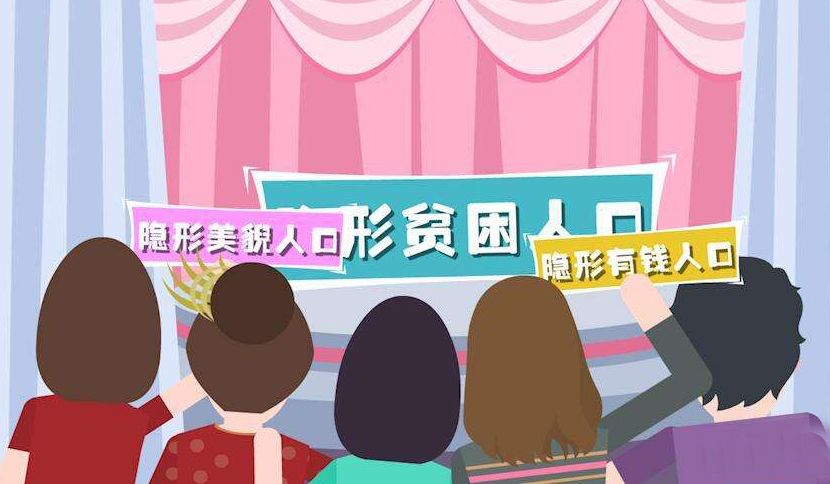最近,微博和朋友圈的好多人都自称是“隐形贫困人口”。


这个词到底什么意思呢?

根据网上的解释,“隐形贫困人口”指有些人看起来每天都有吃有喝有玩,但实际上非常穷。
The invisible poverty-stricken population, or the invisible poor, refers to people whose consumption exceeds their income. They usually live a quality life and spend a lot of money on food, clothing, gym, spas and other daily expenses, which leaves them little or no money in their bank accounts.
“隐形贫困人口”指那些花的比挣的多的人。他们生活讲究质量,在美食、衣服、健身房、水疗按摩以及其他日常支出方面开销很大,银行账户里基本没什么钱。
其实,不仅在中国,“隐形贫困”现象在许多国家都存在,尤其是在年轻人当中。
据美国国家退休安全研究所(National Institute on Retirement Security)的统计,在21岁-32岁的年轻人中,超过66%的人没有为自己的后半生预备存款。
分析认为,造成“隐形贫困”现象的原因之一是害怕落伍,害怕自己落后于同龄人。
Whether it's enjoying the newest restaurants, wearing the latest fashion, or taking expensive vacations, the fear of falling behind their friends is forcing young people to pile up thousands of dollars in debt.
去新开的餐厅尝鲜,紧跟潮流的时尚衣着,或者来个奢华假期,哪个方面都不想落后于小伙伴,年轻人们由此累积了数千美元的债务。
这种情况,在英语里叫FOMO(fear of missing out)。
FOMO(错失恐惧症)形容担心错过别人去参加的活动或所做的有趣的事情,这种焦虑通常是由于在社交网络中看到了别人发送的帖子而引起的。
怎么样?说的是你吗?
这还不算完,被“隐形贫困人口”扎心之后,网友们举一反三,又自创了一波新词。

The invisible rich people: people who claim that they are broke and praying for sudden wealth, but are actually rich and making a lot of money.

The invisible single people: Those who appear to be adept at flirting but have never been in a relationship in real life.

The invisible overweight people: People whose figure appears normal but actually have extra fat in the belly and butt.
好吧,你中了多少枪?
(来源:中国日报网)







